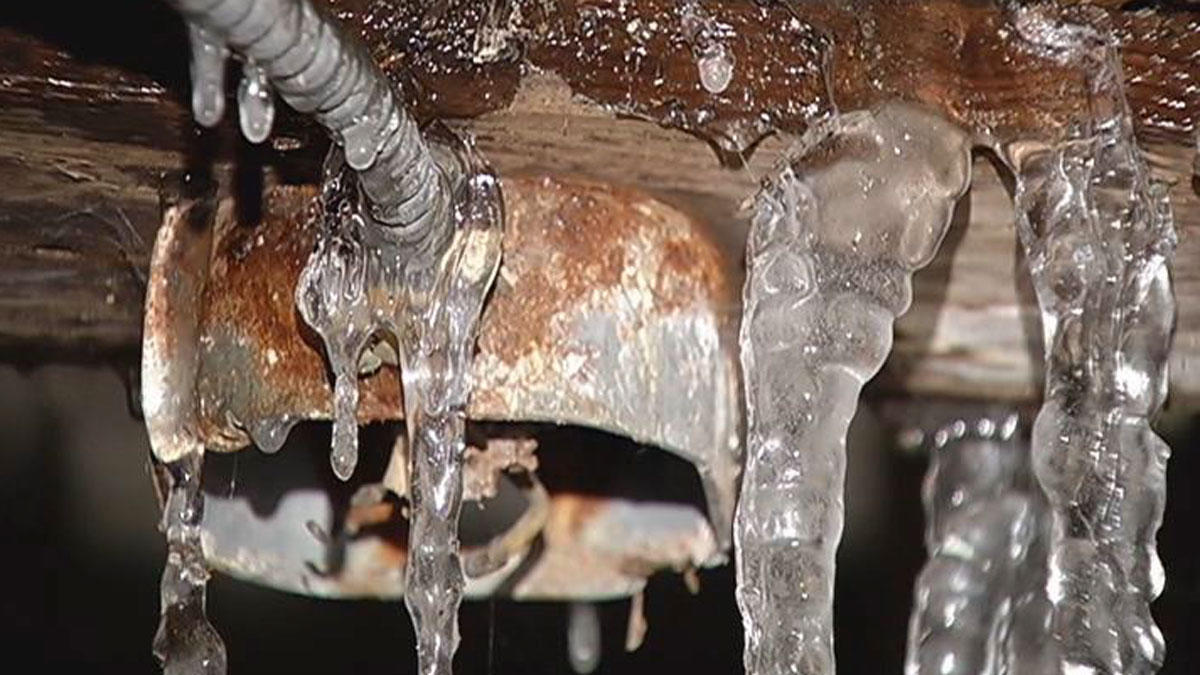How to Prevent Frozen Plumbing in Winter: Professional Guidance
How to Prevent Frozen Plumbing in Winter: Professional Guidance
Blog Article
Nearly everybody has got his or her own piece of advice on the subject of How to prepare your home plumbing for winter weather.

Cold weather can damage your plumbing, particularly by freezing pipes. Here's how to prevent it from taking place and what to do if it does.
Introduction
As temperatures decline, the threat of frozen pipes rises, possibly resulting in pricey repair services and water damages. Comprehending just how to avoid icy pipes is important for home owners in cool environments.
Recognizing Icy Pipes
What causes pipelines to ice up?
Pipes ice up when exposed to temperatures below 32 ° F (0 ° C) for extended periods. As water inside the pipes ices up, it expands, taxing the pipe walls and potentially causing them to break.
Threats and problems
Frozen pipes can result in water disturbances, residential or commercial property damages, and expensive repair services. Ruptured pipes can flooding homes and create substantial architectural damage.
Signs of Frozen Water Lines
Determining frozen pipes early can prevent them from breaking.
Exactly how to recognize icy pipes
Look for decreased water flow from taps, uncommon odors or noises from pipes, and visible frost on exposed pipelines.
Prevention Tips
Protecting susceptible pipes
Wrap pipes in insulation sleeves or make use of warm tape to safeguard them from freezing temperatures. Focus on pipelines in unheated or exterior locations of the home.
Home heating methods
Maintain indoor rooms adequately heated, specifically locations with plumbing. Open cabinet doors to allow warm air to distribute around pipes under sinks.
Protecting Exterior Pipes
Garden hoses and outdoor faucets
Detach and drain pipes yard pipes prior to winter. Install frost-proof faucets or cover outside taps with insulated caps.
What to Do If Your Pipes Freeze
Immediate activities to take
If you suspect icy pipes, keep faucets open to relieve pressure as the ice melts. Make use of a hairdryer or towels taken in warm water to thaw pipelines gradually.
Long-Term Solutions
Structural adjustments
Consider rerouting pipelines away from exterior walls or unheated areas. Add additional insulation to attic rooms, cellars, and crawl spaces.
Upgrading insulation
Purchase high-grade insulation for pipelines, attic rooms, and walls. Appropriate insulation helps keep constant temperature levels and decreases the threat of icy pipelines.
Final thought
Stopping icy pipes needs positive measures and fast reactions. By recognizing the reasons, signs, and preventive measures, homeowners can safeguard their pipes throughout cold weather.
6 Proven Ways to Prevent Frozen Pipes and Protect Your Home
Disconnect and Drain Garden Hoses
Before winter arrives, start by disconnecting your garden hoses and draining any remaining water. Close the shut-off valves that supply outdoor hose bibs and leave the outdoor faucet open to allow any residual water to drain. For extra protection, consider using faucet covers throughout the colder months. It’s also important to drain water from any sprinkler supply lines following the manufacturer’s directions.
Insulate Exposed Pipes
Insulating your pipes is an effective way to prevent freezing. Pipe insulation is readily available at home improvement stores and is relatively inexpensive. Pay close attention to pipes in unheated areas such as the attic, basement, crawl spaces, or garage. Apply foam insulation generously to create a buffer against the cold. You can also wrap your pipes in heat tape or thermostat-controlled heat cables for added warmth.
Seal Air Leaks
Inspect your home for any cracks or openings that could let in cold air. Seal any holes around the piping in interior or exterior walls, as well as the sill plates where your home rests on its foundation. Additionally, make sure to keep your garage door closed unless you’re entering or exiting. Leaving it open creates a significant air leak that can lead to frozen pipes.
Allow Warm Air Circulation
During cold snaps, it’s essential to allow warm air to circulate evenly throughout your home. Leave interior doors ajar to promote better airflow. Open kitchen and bathroom cabinets to help distribute heat consistently around the rooms. If you have small children or pets, be sure to remove any household chemicals or potentially harmful cleaners from open cabinets for safety.
Let Faucets Drip
A small trickle of water can make a big difference in preventing ice formation inside your pipes. When temperatures drop significantly, start a drip of water from all faucets served by exposed pipes. This continuous flow helps prevent the water from freezing. Additionally, running a few faucets slightly can relieve pressure inside the pipes, reducing the chances of a rupture if the water inside does freeze.
https://choateshvac.com/6-proven-ways-to-prevent-frozen-pipes-and-protect-your-home/

I found that page on How To Avoid Freezing Pipes when doing a search on the web. Make sure you pause to share this article if you liked it. Thanks a bunch for being here. Return soon.
Hire A Pro Report this page